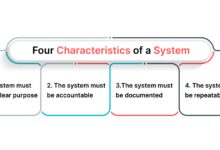System Design Interview: 7 Ultimate Tips to Crush Your Next Tech Interview
Navigating a system design interview can feel like preparing for a marathon blindfolded. But with the right strategy, clarity, and practice, you can not only survive but dominate. Let’s break down everything you need to ace it.
What Is a System Design Interview?

A system design interview is a critical component of the hiring process for software engineering roles, especially at top-tier tech companies like Google, Amazon, and Meta. Unlike coding interviews that focus on algorithms and data structures, system design interviews assess your ability to design scalable, reliable, and maintainable systems under real-world constraints.
Core Purpose of System Design Interviews
The primary goal is to evaluate how well you can think through complex engineering problems. Interviewers aren’t looking for a single correct answer but rather your thought process, trade-off analysis, and communication skills.
- Assess problem-solving approach under ambiguity
- Evaluate technical depth and breadth
- Test communication and collaboration abilities
“Design is not just what it looks like and feels like. Design is how it works.” – Steve Jobs
Common Roles That Require System Design Interviews
These interviews are typically part of the mid-to-senior level software engineering roles, including:
- Backend Engineer
- Full-Stack Developer
- DevOps Engineer
- Site Reliability Engineer (SRE)
- Engineering Manager
Even frontend engineers may face simplified versions when working on large-scale applications. For more on role-specific expectations, check out Glassdoor’s role breakdowns.
Why System Design Interview Skills Are Non-Negotiable
In today’s distributed, cloud-native world, building systems that handle millions of users is no longer optional—it’s expected. A strong performance in a system design interview signals that you can architect solutions that scale, perform, and remain resilient under pressure.
Industry Demand for Scalable System Thinkers
With the rise of microservices, serverless architectures, and global user bases, companies need engineers who can design systems that are fault-tolerant and efficient. According to a 2023 report by Levels.fyi, over 78% of senior engineering candidates fail the system design round, making it a key differentiator.
- High failure rate = high value if mastered
- Direct impact on promotion and hiring decisions
- Essential for leadership and architecture roles
How It Differs From Coding Interviews
While coding interviews test your ability to write correct and efficient code, system design interviews evaluate your ability to:
- Think in terms of components and interactions
- Balance trade-offs (consistency vs. availability, latency vs. cost)
- Anticipate future growth and failure modes
You won’t be writing code line-by-line; instead, you’ll be sketching high-level architectures and justifying your choices.
Step-by-Step Framework for Tackling Any System Design Interview
Having a repeatable framework is crucial. Without structure, even experienced engineers can get lost. Here’s a proven 6-step method used by top performers.
Step 1: Clarify Requirements (Functional & Non-Functional)
Never jump into design without asking questions. Start by clarifying both functional and non-functional requirements.
- Functional: What should the system do? (e.g., allow users to post tweets)
- Non-Functional: How well should it perform? (e.g., 100ms latency, 99.9% uptime)
Ask about scale: How many users? Requests per second? Data volume? For example, designing Twitter for 1M users vs. 500M users leads to vastly different architectures.
Step 2: Estimate Scale (Back-of-the-Envelope Math)
Estimation is a core skill. Use simple math to project traffic, storage, and bandwidth needs.
- DAU (Daily Active Users): 1 million
- Reads per user per day: 20 → 20M read requests/day
- Writes per user per day: 2 → 2M write requests/day
- Requests per second (RPS): ~23 RPS writes, ~230 RPS reads
- Storage: 2KB per post × 2M posts/day = ~4GB/day → ~1.2TB/year
These numbers guide your choice of databases, caching, and CDN usage. For estimation templates, visit System Design Primer on GitHub.
Step 3: Define Core Components
Break the system into major services. For a social media app, this might include:
- User Service (authentication, profiles)
- Post Service (create, read, update, delete)
- Feed Service (timeline generation)
- Notification Service
Draw a simple block diagram. Label APIs (e.g., REST or gRPC) between services. This shows modularity and clean separation of concerns.
Step 4: Choose Data Storage
Database selection is critical. Consider:
- SQL vs NoSQL: Use SQL for strong consistency (e.g., user accounts), NoSQL for scale (e.g., posts, logs)
- Partitioning: Shard by user ID or geographic region
- Replication: Leader-follower for read scalability
For example, use PostgreSQL for user data and Cassandra for activity feeds.
Step 5: Address Scalability & Performance
Now optimize for scale. Common techniques:
- Caching: Use Redis or Memcached for hot data (e.g., trending posts)
- CDN: Serve static assets (images, videos) via CDN
- Load Balancing: Distribute traffic across web servers
- Asynchronous Processing: Use message queues (Kafka, RabbitMQ) for notifications
Explain how each improves performance and availability.
Step 6: Discuss Trade-offs and Failure Modes
No system is perfect. Acknowledge limitations:
- Eventual consistency in distributed databases
- Single points of failure (e.g., primary DB)
- Cost vs. performance trade-offs
Propose mitigations: replication, circuit breakers, monitoring. This shows maturity and real-world awareness.
Common System Design Interview Questions (With Breakdowns)
Practice with real-world scenarios. Here are 5 frequently asked questions and how to approach them.
system design interview – System design interview menjadi aspek penting yang dibahas di sini.
Design a URL Shortener (e.g., TinyURL)
Functional requirements: accept a long URL, return a short one, redirect when accessed.
- Estimate: 100M new URLs/month → 3.8 RPS
- Short key: 6-8 characters (Base62 encoding)
- Storage: NoSQL (Cassandra) or SQL with sharding
- Cache: Redis for frequent redirects
- Redirection: 301 (permanent) for SEO
Key challenge: generating unique short keys at scale. Options: hash-based, random generation with retry, or pre-generated keys.
Design a Chat Application (e.g., WhatsApp)
Features: 1:1 messaging, group chat, online status, push notifications.
- Scale: 1B users, 10M concurrent
- Protocol: WebSocket or MQTT for real-time
- Message delivery: persistent queues (Kafka)
- Presence: Redis for online status
- Storage: sharded NoSQL (e.g., DynamoDB)
Challenge: handling message ordering and delivery guarantees. Use sequence numbers and acknowledgments.
Design a Streaming Service (e.g., Netflix)
Requirements: video upload, transcoding, content delivery, recommendations.
- Storage: object storage (S3) for videos
- Transcoding: async job queue (e.g., AWS Elastic Transcoder)
- CDN: Akamai or CloudFront for low-latency delivery
- Personalization: ML models for recommendations
- DRM: protect premium content
Latency is critical—optimize edge caching and adaptive bitrate streaming.
Design a Distributed Cache
Like building your own Redis. Key features: get, set, TTL, eviction (LRU), high throughput.
- Data partitioning: consistent hashing
- Replication: for fault tolerance
- Eviction: LRU or LFU algorithms
- API: simple key-value interface
Trade-off: in-memory speed vs. limited capacity. Use tiered caching (RAM + SSD) if needed.
Design a Rate Limiter
Prevent abuse by limiting requests per user/IP.
- Algorithms: token bucket, leaky bucket, fixed window
- Storage: Redis for counters
- Distributed: need coordination across servers
- Granularity: per user, per endpoint, per IP
Challenge: accuracy vs. performance. Token bucket allows burst traffic; leaky bucket smooths it.
Key Concepts You Must Master for System Design Interview
Beyond frameworks and questions, you need deep understanding of foundational concepts.
Scalability: Vertical vs. Horizontal
Vertical scaling means upgrading a single server (more CPU, RAM). It’s simple but has limits and creates a single point of failure.
Horizontal scaling adds more machines. It’s more complex (needs load balancing, service discovery) but enables near-infinite scale. Most modern systems use horizontal scaling.
- Stateless services scale better
- Use auto-scaling groups in cloud environments
Availability and Reliability
Availability is uptime (e.g., 99.9% = ~8.76 hours downtime/year). Reliability is the system’s ability to perform consistently.
- Use redundancy: multiple instances, regions
- Implement health checks and failover
- Design for graceful degradation
Follow the AWS Reliability Pillar for best practices.
Consistency Models: Strong, Weak, Eventual
In distributed systems, consistency is a trade-off.
- Strong: All nodes see the same data at the same time (e.g., banking)
- Eventual: Nodes converge over time (e.g., social media likes)
- Weak: No guarantees (rarely used)
Understand the CAP theorem: you can only have two of Consistency, Availability, Partition Tolerance.
Latency, Throughput, and Bottlenecks
Latency is response time; throughput is requests per second. A system can have low latency but low throughput (e.g., a slow database), or high throughput but high latency (e.g., batch processing).
- Identify bottlenecks: CPU, memory, disk I/O, network
- Use monitoring tools (Prometheus, Grafana)
- Optimize critical paths (e.g., database indexing)
How to Prepare for a System Design Interview: A 30-Day Plan
Mastery requires deliberate practice. Here’s a structured 30-day roadmap.
Week 1: Build Foundations
Focus on core concepts:
- Read: Designing Data-Intensive Applications (DDIA) by Martin Kleppmann
- Study: HTTP, REST, gRPC, DNS, TCP/IP
- Learn: SQL vs NoSQL, ACID, CAP theorem
- Watch: Hussein Nasser’s system design videos
Week 2: Practice Core Patterns
Work on common design patterns:
- Caching strategies (client, CDN, proxy, server)
- Load balancing (round-robin, least connections)
- Database replication and sharding
- Message queues and event-driven architecture
Draw architectures on paper or using tools like Excalidraw or Lucidchart.
Week 3: Solve Real Problems
Practice 2-3 questions per day using the 6-step framework.
system design interview – System design interview menjadi aspek penting yang dibahas di sini.
- Start with: TinyURL, Parking Lot, Rate Limiter
- Progress to: Twitter, Netflix, Uber
- Use: System Design Primer for reference
Time yourself: 30-45 minutes per problem.
Week 4: Mock Interviews & Refinement
Simulate real conditions:
- Do 3-5 mock interviews with peers or mentors
- Record yourself and review communication
- Refine your whiteboard skills
- Prepare for follow-up questions (e.g., “How would you handle 10x traffic?”)
Join communities like r/cscareerquestions for feedback.
Tools and Resources to Master System Design Interview
Leverage the best tools to accelerate your learning.
Books Every Engineer Should Read
- Designing Data-Intensive Applications – Martin Kleppmann (the bible)
- System Design Interview – An Insider’s Guide – Alex Xu
- Cracking the Coding Interview – Gayle Laakmann McDowell (has a solid system design section)
Online Courses and Video Tutorials
- Grokking the System Design Interview (Educative)
- System Design Interview Preparation (Udemy)
- Hussein Nasser’s YouTube Channel
Practice Platforms and Communities
- LeetCode System Design Problems
- GitHub System Design Primer
- Design Gurus
- Reddit: r/systemdesign, r/cscareerquestions
Mistakes to Avoid in a System Design Interview
Even smart engineers fail due to avoidable errors. Here are the top pitfalls.
Jumping Into Design Too Quickly
Rushing to draw boxes without clarifying requirements is the #1 mistake. You might solve the wrong problem.
- Always start with questions
- Define scope and constraints first
Interviewers want to see structured thinking, not speed.
Ignoring Non-Functional Requirements
Focusing only on functionality and ignoring scalability, latency, or security leads to fragile designs.
- Explicitly discuss availability, consistency, and durability
- Mention monitoring, logging, and alerting
Overcomplicating the Design
Don’t throw in Kubernetes, Kafka, and microservices for a simple app. Start simple, then scale.
- Follow YAGNI (You Aren’t Gonna Need It)
- Justify every technology choice
Poor Communication and Diagramming
If the interviewer can’t follow your sketch or logic, you’ll lose points.
- Label components clearly
- Explain your reasoning aloud
- Use standard notations (e.g., rectangles for services, circles for DBs)
Failing to Discuss Trade-offs
No design is perfect. Not acknowledging trade-offs makes you seem inexperienced.
- Compare options: SQL vs NoSQL, polling vs streaming
- Discuss cost, complexity, and maintainability
How important is system design in FAANG interviews?
Extremely important. For mid-level and senior roles at FAANG companies (Facebook/Meta, Amazon, Apple, Netflix, Google), the system design interview is often the most challenging and decisive round. Candidates are expected to demonstrate deep technical judgment, architectural thinking, and the ability to build systems at massive scale. Failing this round is a common reason for rejection, even if coding performance was strong.
How long should I prepare for a system design interview?
Most engineers need 4–8 weeks of dedicated preparation, depending on experience. Junior engineers may need more time to build foundational knowledge, while senior engineers might focus on refining communication and pattern recognition. A structured 30-day plan, as outlined above, is highly effective for most candidates.
Can I use diagrams during a system design interview?
Absolutely. In fact, you’re expected to draw diagrams—whether on a whiteboard, virtual canvas (like Miro), or paper. Clear, labeled diagrams help communicate your architecture and show organized thinking. Just ensure your sketch is legible and components are properly connected and explained.
What if I don’t know the answer to a follow-up question?
It’s okay not to know everything. What matters is how you respond. Say, “I’m not certain, but here’s how I’d approach it…” or “I haven’t worked with that specific technology, but based on similar patterns, I’d consider…” This shows humility, problem-solving ability, and willingness to learn—qualities interviewers value.
Is system design only for backend engineers?
Primarily, yes—but not exclusively. While backend, full-stack, and infrastructure roles emphasize system design heavily, frontend engineers at large companies may face simplified versions, especially when working on complex SPAs, state management, or performance optimization at scale. Understanding system design helps all engineers collaborate better across teams.
Mastering the system design interview is a journey, not a sprint. It requires blending technical depth with clear communication and structured thinking. By following a proven framework, practicing real problems, and learning from mistakes, you can confidently tackle any design challenge. Remember, interviewers aren’t looking for perfection—they want to see how you think, adapt, and solve problems under pressure. With the right preparation, you won’t just pass the system design interview; you’ll excel.
system design interview – System design interview menjadi aspek penting yang dibahas di sini.
Further Reading:









